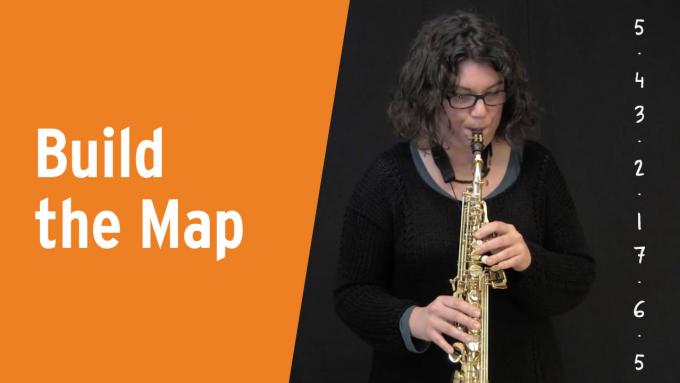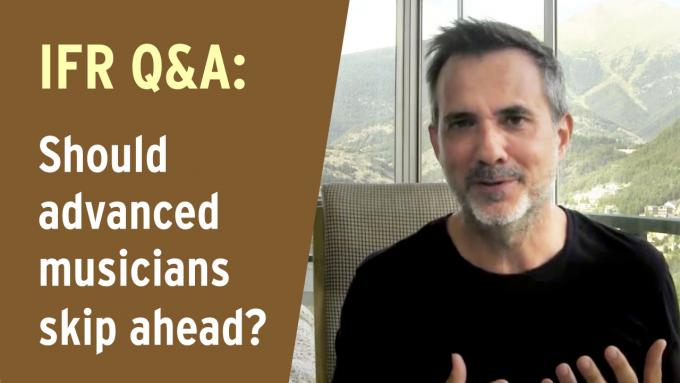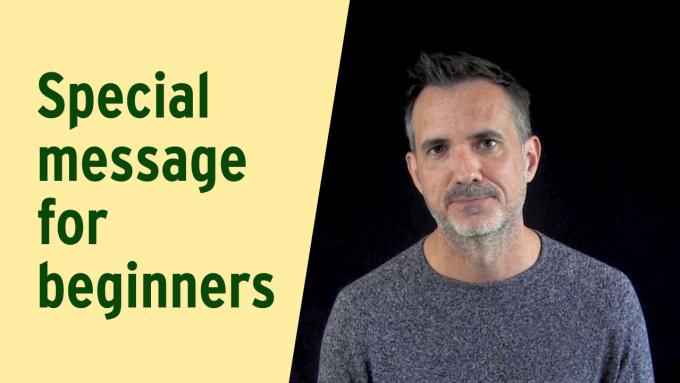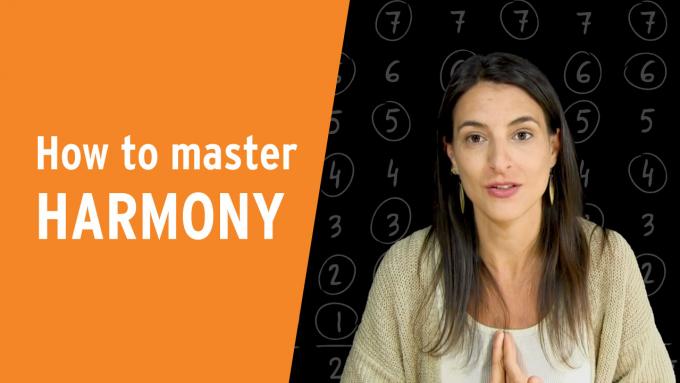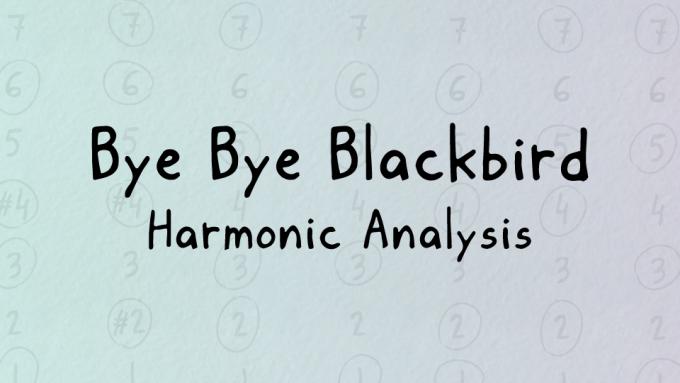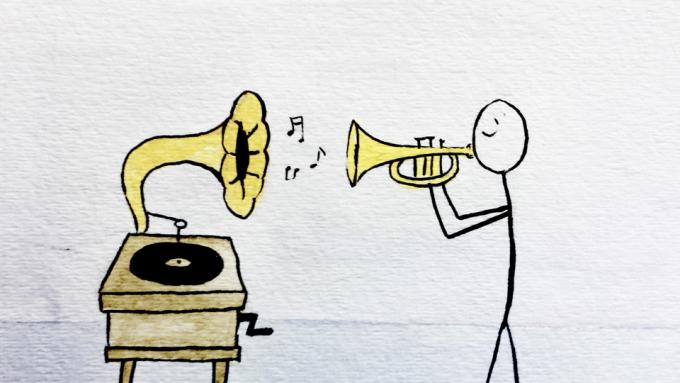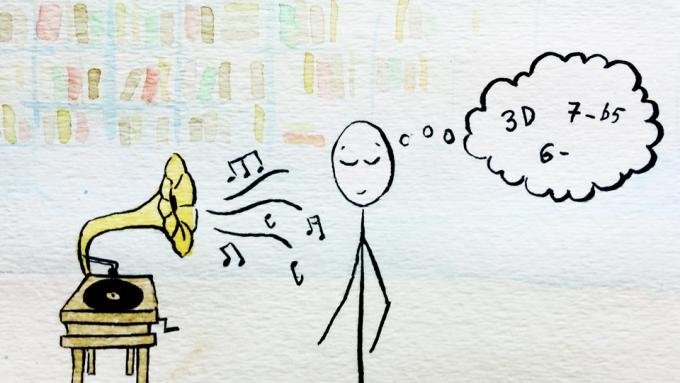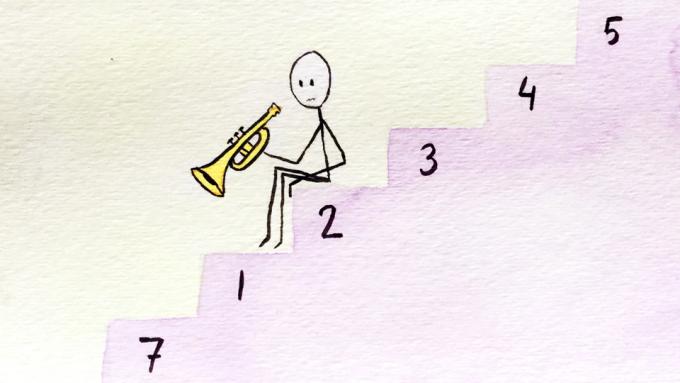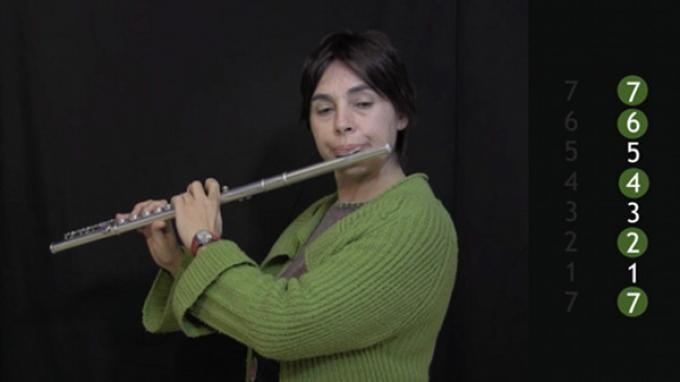I'm just getting started in IFR. Can you explain the difference between the IFR Video Course for Guitar and the IFR Chord Melody Workshop? Should I take one before the other?
In this video I'll show you two fantastic exercises for beginners to the IFR method. These two exercises will greatly accelerate your ability to visualize the notes of any key on your instrument.
An advanced trumpet player asks if he should skip over the beginning IFR materials and go directly to the IFR Standards Workouts. But for any advanced player who struggles to play by ear, it's in the very first IFR activities that you will learn this ability.
This is a special lesson for beginners to musical improvisation. I'll show you how you can begin improvising right now as a creative and exciting part of your daily music practice.
In this video I'll teach you an organized system for mastering harmony using our three integrated creative practices: improvising, composing and listening.
Despite the almost child-like simplicity of this popular song written by Ray Henderson, Bye Bye Blackbird has become one of the most important jazz standards of all time. In this lesson we analyze the complete chord progression.
I see the importance of knowing the sounds from the tonal map and being able to sing what you play. However, isn’t improvisation also a matter of transcribing other artists’ music to absorb the “feel” and “time” they have?
Sometimes I have to listen to a chord progression between 5-10 times before I can recognize the chords. Is this normal? Or should I be able to do this instantly?
"In Exercise 2: Melody, I find it difficult to play a scale starting on note 2 or any other note besides note 1. I can sight read most things, but starting on anything other than note 1 is problematic. Please help."
For IFR students practicing Exercise 3: Pure Harmony, this is a demonstration of the exercise Seven Worlds Expanded on the flute. Anna Crusat demonstrates the exercise exploring the 7 chord in the modal range.

